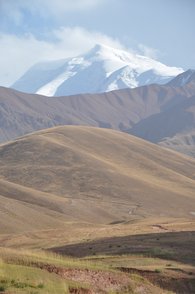Central Asia is one of the tectonically most active regions on Earth. Moreover, it is influenced by two large climate systems, the westerlies and the monsoon. CaTeNA aims to investigate the two most severe natural hazards related to these factors: earthquakes and mass movements. Because population and concentration of values is steadily increasing in Central Asia, the vulnerability rises. Hence, estimates of risk and vulnerability of the region are of utmost importance in order to support the Central Asian countries to be prepared for these repeating extreme events. These estimates come along with an in-depth understanding of the processes leading to these natural hazards including their time scales, rates and coupling. Our section forms part of the sub-project "The recent deformation in the Pamir based on seismic and geodetic data, dynamic landslide-suszeptibility and risk analysis, and seismic imaging of the North Pamir Thrust". We plan to conduct shallow seismic sounding together with paleoseismological trenching to investigate the spatio-temporal evolution of the Main Pamir Thrust.
Time frame
- 2017 - 2020
Funding
- BMBF (CAME II) - Federal Ministry of Education and Research
Principal Investigator
- Ch. Haberland (GFZ Potsdam)
Cooperations
- M. Strecker, O. Korup (Uni Potsdam)
- S. Rössner, B. Schurr (GFZ Potsdam)
- U. Abdybachaev, S. Orunbaev (CAIAG, Kyrgyzstan)
Methods & Equipment
- Shallow seismics together with paleoseismological trenching analysis
Publications/Results
- Ryberg, T.; Haberland, C.; Abdybachaev, U.; Sharshebaev, A. (2021): Data of shallow seismic profiles in the Alai valley, Kyrgyzstan, collected within the CaTeNA project. GFZ Data Services. doi:10.5880/GIPP.201914.1
- Yuan, X., Schurr, B., Haberland, C., Abdybachaev, U., Sharshebaev, A. (2019): Multi-scale imaging of the Main Pamir Thrust faults within the framework of CaTeNa project - climatic and tectonic natural hazards in Central Asia. doi:10.14470/2N7564774946



